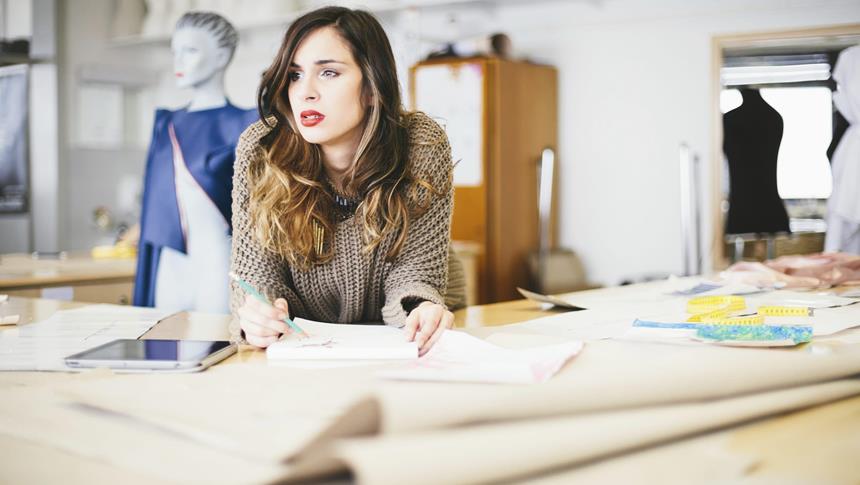Fashion designers create clothes using various shapes, patterns and materials. They usually specialise in one particular area- this could be anything from accessories and footwear to costume and historical design.
Some fashion designers may work solo, creating their own collections or producing a brand under their own name, while others work as part of a team to create merchandise for a specific company. Research is a big part of the job, by examining trend reports published by industry experts, some fashion designers anticipate the styles and patterns that will be big next season. Others may take inspiration for their collections from personal experiences, art, culture and the media.
Fashion designers usually work in one of three areas:
High street: clothes and accessories for the mass market; this is where the majority of fashion designers work. Celebrity styles and seasonal trends heavily influence this sector, it is a commercial area that is dominated by advertising and the media.
Ready-to-wear (or prêt-à-porter): established designers create small ready-to-wear collections. Usually presented by fashion houses during fashion week.
Haute couture: high-end designs, usually one-off garments that have had a large amount of time spent on their design and production. Often seen on catwalks but not practical or affordable enough for most people to wear. Serve to promote a brand and create a ‘look’.
What does a fashion designer do?
The key responsibilities will vary depending on the specific company or brand the designer is working for. In general, core duties will include the following:
- Creating and then sketching designs either by hand or by using computer aided design (CAD);
- Keeping up with everything in the fashion world and researching future trends;
- Coming up with ideas for new collections;
- Working with other designers, buyers and forecasters to develop new merchandise;
- Coordinating with other members of staff to ensure items are appropriate for their target audience;
- Producing patterns using technical specifications;
- Sourcing various fabrics, trims and fastenings;
- Selecting products suitable for mass production;
- Developing specific patterns to be used in garments;
- Supervising production and negotiating with suppliers.
Steps to becoming a fashion designer
Hone your skills in sketching and sewing
Practise drawing any design ideas in your spare time, research colours and how they relate to each other and brush up on your sewing and pattern making. These are all key skills that will help you make progress in the world of fashion design.
Research the industry thoroughly
Learn everything possible about the fashion industry – look into different brands, companies and future trends. Become familiar with the major department stores, what they sell, and the marketing techniques they employ.
Obtain qualifications in fashion design
Many colleges and universities offer degrees in fashion design, alongside private art and design schools. It could be beneficial to supplement a fashion design degree with a business or marketing degree; this ensures that you have the business knowledge as well as the practical skills necessary to stand out in the fashion industry.
Create an original portfolio
An original portfolio of work is one of the best ways to show off your skills to potential employers. Include any of your original designs, sketches or ideas. Make sure everything is neat, and showcase any research and development you have carried out that have contributed to your designs.
Gain as much experience as possible
One easy way to gain experience in fashion is to volunteer, you could costume for a local theatre, or offer to help out at fashion week. Internship opportunities also add a great deal of weight to your CV, the more experience you have in the world of fashion the better.
The fashion world is well-known for being challenging to get into, and can be a very competitive area to specialise in. However, the benefits of getting to work in such a dynamic, fast-paced and rewarding industry are sure to balance out the difficulties. Whether you’re interesting in costume, runway or high street, following these tips will lay the foundations for a successful career as a fashion designer.

